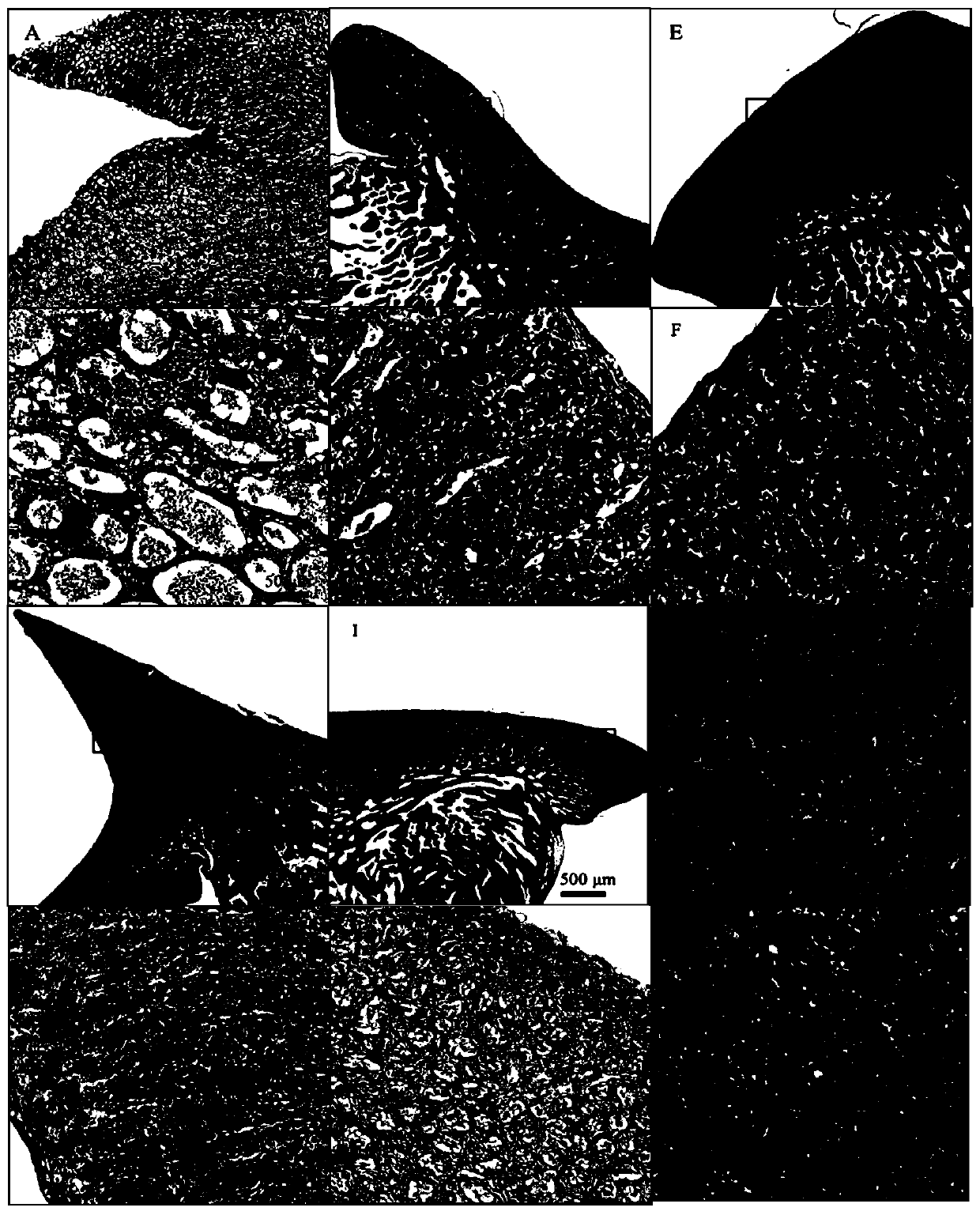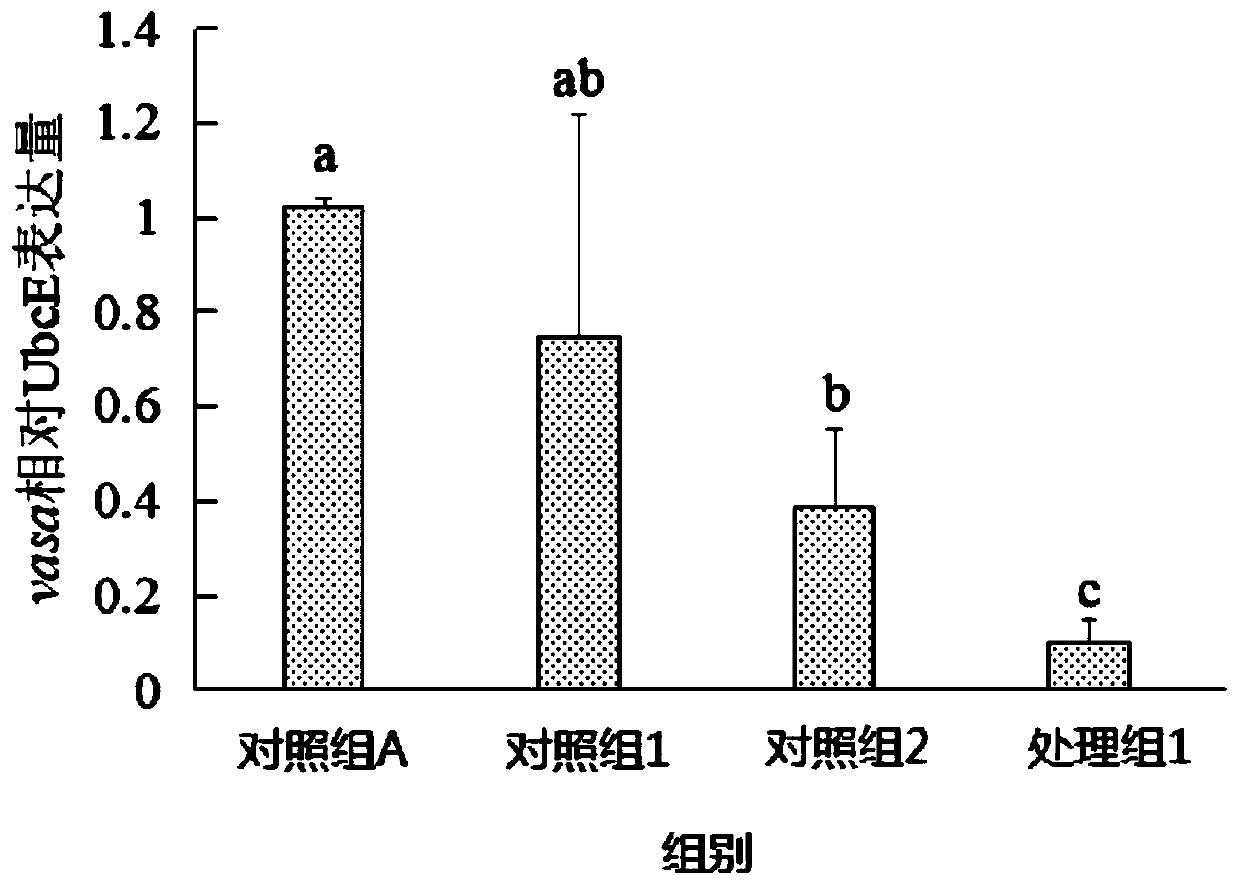Method for promoting apoptosis of testis germ cells of bastard halibuts
A technology of germ cell apoptosis and flounder, which is applied in the field of germ cell transplantation, can solve the problems of inapplicability, apoptosis of testicular germ cells of flounder, and ensure the survival rate of flounder, so as to achieve the reduction of gonad index, good apoptosis effect, The effect of gene expression reduction
- Summary
- Abstract
- Description
- Claims
- Application Information
AI Technical Summary
Problems solved by technology
Method used
Image
Examples
Embodiment 1
[0040] The method for promoting the apoptosis of the testicular germ cells of the flounder flounder of the present embodiment comprises the following steps:
[0041] 1. The first cultivation
[0042] During the reproductive season, the cultivation temperature of 30 2-year-old experimental fish male flounder adapted to the experimental environment was raised from 14°C (normal breeding water temperature) to 28°C (the first high temperature) at a rate of 1°C per day, and then at 28°C. The first high temperature was cultivated for 60 days; after testing, the semen of the male flounder after 60 days of high temperature culture at 28°C was completely digested, and the semen could not be seen by the naked eye through manual extrusion.
[0043] 2. The second incubation and injection of 1,4-butanediol dimesylate
[0044] After the first cultivation under the above-mentioned first high temperature, the gonad depletion experiment was carried out on the male flounder. The details of the...
Embodiment 2
[0046] The method for promoting the apoptosis of the testicular germ cells of the flounder flounder of the present embodiment comprises the following steps:
[0047] 1. The first high temperature cultivation
[0048] During the reproductive season, the cultivation temperature of 30 2-year-old experimental fish male flounder adapted to the experimental environment was raised from 10.5°C (normal breeding water temperature) to 28.5°C (the first high temperature) at a rate of 1.5°C per day, and then at 28.5°C The first high temperature was cultivated for 55 days; according to the test, the semen of the male flounder after 55 days of high temperature culture at 28.5 ℃ was completely digested, and the semen could not be seen by the naked eye through manual extrusion.
[0049] 2. The second incubation and injection of 1,4-butanediol dimesylate
[0050] After the first cultivation under the above-mentioned first high temperature, the gonad depletion experiment was carried out on the ...
Embodiment 3
[0052] The method for promoting the apoptosis of the testicular germ cells of the flounder flounder of the present embodiment comprises the following steps:
[0053] 1. The first high temperature cultivation
[0054] During the breeding season, the cultivation temperature of 30 2-year-old experimental fish male flounder adapted to the experimental environment was raised from 15.5°C (normal culture water temperature) to 27.5°C (the first high temperature) at a rate of 2°C per day, and then at 27.5°C The first high temperature was cultured for 65 days; after testing, the semen of the male flounder was completely digested after 65 days of high temperature culture at 27.5°C.
[0055] 2. The second incubation and injection of 1,4-butanediol dimesylate
[0056] After the first cultivation under the above-mentioned first high temperature, the gonad depletion experiment was carried out on the male flounder. The details of the gonad depletion experiment are as follows: First, the exp...
PUM
 Login to View More
Login to View More Abstract
Description
Claims
Application Information
 Login to View More
Login to View More - R&D
- Intellectual Property
- Life Sciences
- Materials
- Tech Scout
- Unparalleled Data Quality
- Higher Quality Content
- 60% Fewer Hallucinations
Browse by: Latest US Patents, China's latest patents, Technical Efficacy Thesaurus, Application Domain, Technology Topic, Popular Technical Reports.
© 2025 PatSnap. All rights reserved.Legal|Privacy policy|Modern Slavery Act Transparency Statement|Sitemap|About US| Contact US: help@patsnap.com



